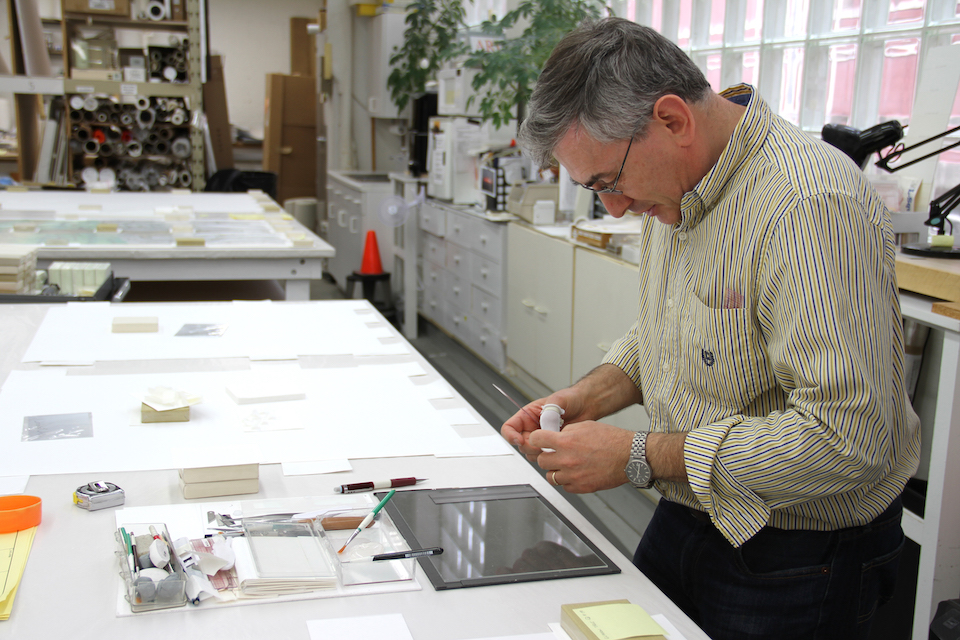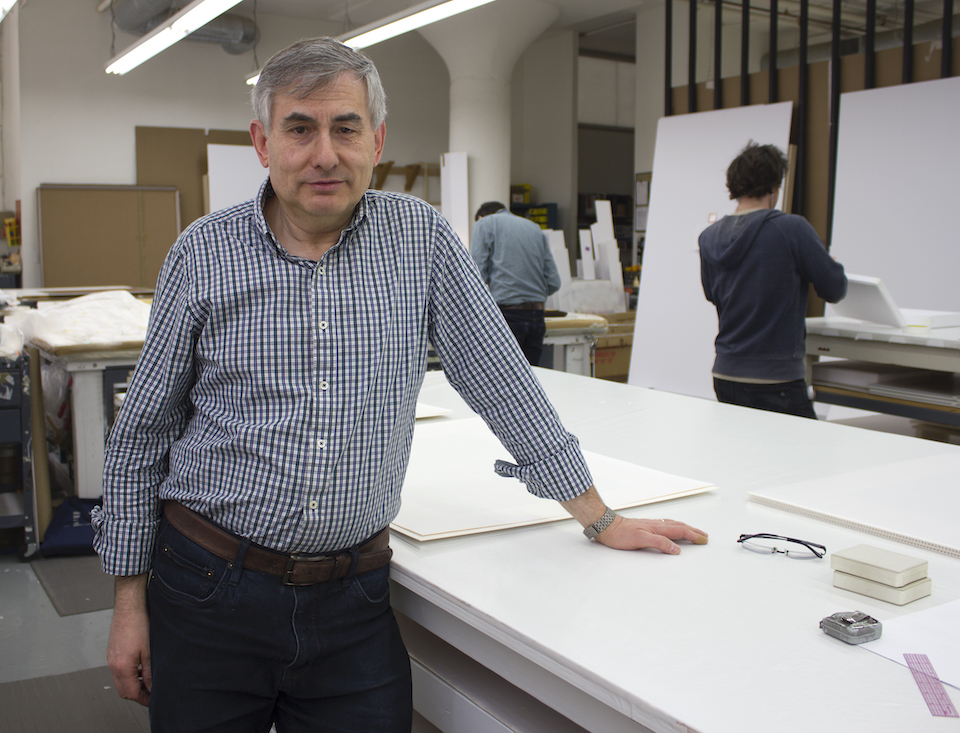For the second interview in our on-going series highlighting our employee-owners, we talked with Bark Frameworks hinger Mark Minevich.

Employee owner name: Mark Minevich
Department/Position at Bark Frameworks: Art Preservation / Hinging
Hails from: St. Petersburg, Russia. I came to America at age 23, with my parents and brother.
How long have you worked at Bark? For 31 years, with a brief break around 1998.
What did you do before you worked at Bark Frameworks?
I was studying classical music — conducting, playing the piano — at the Mannes School of Music [now the conservatory of The New School.] I played in a band, but needed more full time work. An employment agency I visited gave me aptitude tests and found me overqualified for most positions, but a man there suggested working in picture framing so that I could stay around fine art. An ad in the Village Voice led to my first framing job as a mat-maker. A few years later, after stints at Frames Unlimited, APF (American Picture Framing), and Modern Frames, I interviewed at Bark Frameworks.
What is the biggest challenge in your area of work at Bark?
To find the right approach to treating each different artwork – there are many technicalities to what we do, and every work of art is different and extremely delicate. We do an analysis of each artwork – there are many things to consider before you even start hinging. The condition of the artwork, its size and shape, its thickness, and the frame design and depth all inform how we hinge it.
The first challenge is figuring out what you’re dealing with; the second is selecting a technique for the hinging – we have to determine safe places to put the hinges on the artwork. Third, we must choose what kind of hinging paper we’ll use. We have about ten different kinds of paper we use for hinges – each paper varies in color and thickness, depending on what the art requires. Then we select an adhesive — we mainly use rice starch paste, which we make fresh with our own recipe each week. We note everything we do on the condition report for the artwork. And the whole process has to be reversible, never permanent. We strive to create a process that can be undone; one that keeps the artwork safe.
On occasion, we also create mechanical attachments and hardware to secure objects for display [that we cannot hinge] – things like tiles, coins, sculpture, and other objects. Our process is ever-changing. It has evolved over time, through years of practice and research. It continues to evolve, as we come together and consult with one another every day.
What do you like best about working at Bark?
Being around art is always exciting. You never know what you’ll find when you open the folder of job sheets in the morning. There are always surprises.
Name a particularly memorable framing job you worked on at Bark:
There is no one particular job, but we get to see a lot of different art. We see many works from private collections, so in a way we get to see art above and beyond what’s in the world’s museums and galleries.
What does being an employee owner mean to you?
Being an employee owner gives us the opportunity to discuss the direction of the company, the future of the company; our goals. The Town Hall meetings we have [where employee owners meet to discuss various topics] give us a chance to talk out issues and solve problems. Coming together like that is good – in our work and in our employee ownership. Two opinions are better than one.
Are you an artist?
Yes, I am trained as a classical musician.
Any other outside hobbies/interests you have when you’re not making frames?
Mainly music, playing the piano. I also like to read books when I have time. I enjoy playing chess, too.
Thank you, Mark!

Interview Text and Photos: Jennifer M. Clark
Originally published: April 2018.
